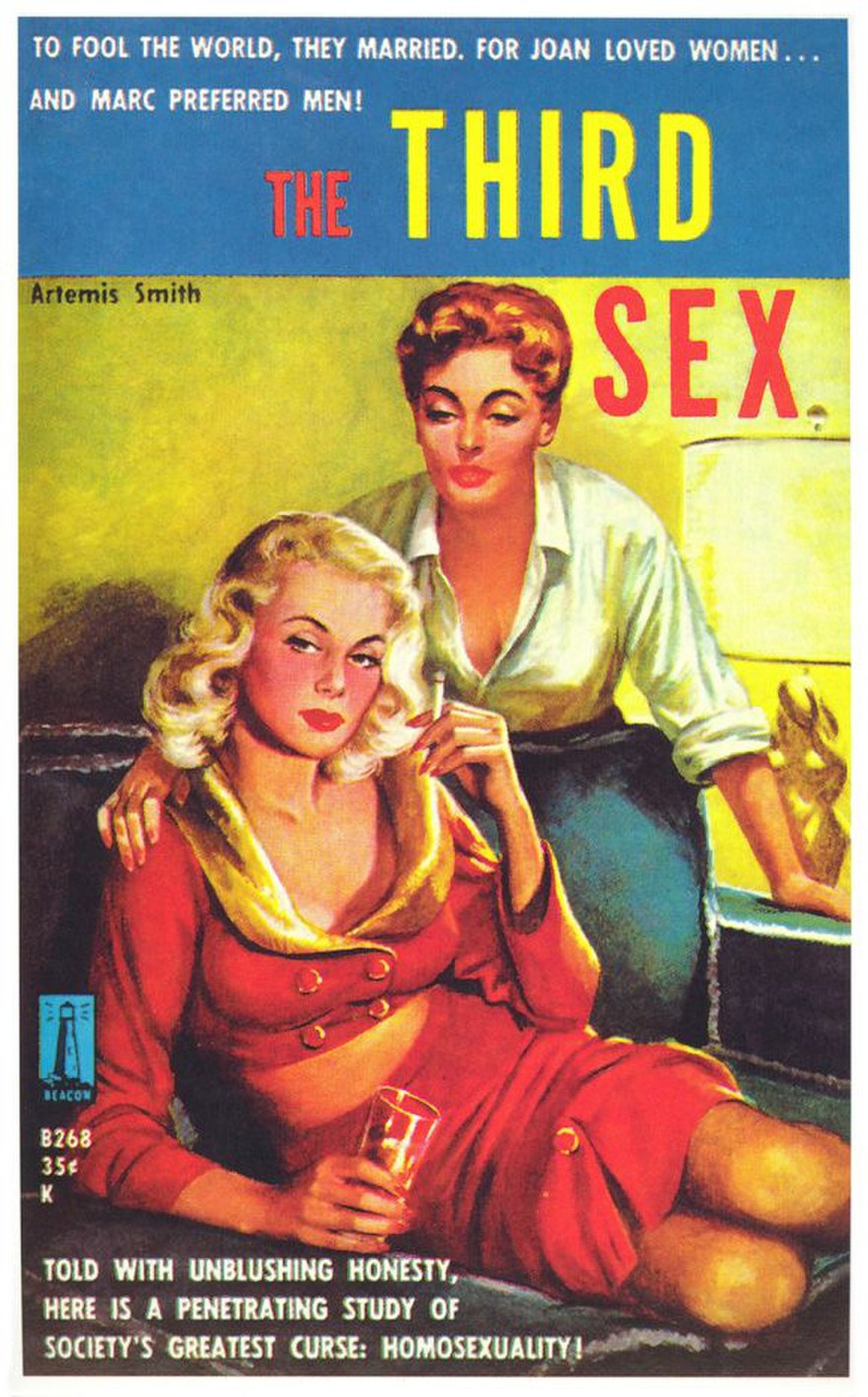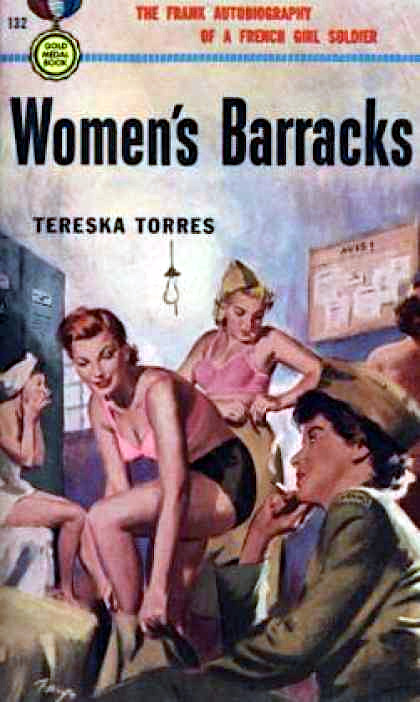|
The Girls In 3-B
''The Girls in 3-B'' is a classic work of lesbian pulp fiction by Valerie Taylor which was published in 1959 by Fawcett. Its happy ending for a lesbian character was unusual for the time period. It was one of the first three novels of any pulp fiction genre to be reprinted in 2003 by Feminist Press. Plot Three eighteen-year-old women, Annice, Pat, and Barby, leave their rural Iowa town and move to Chicago to find jobs and an apartment together. Each falls in love and must make a decision about whether to accept or reject the contemporary morality of the 1950s, which pressures them to make traditional marriages as young as possible. The book deals with themes of rape, incest, racism, abortion, closeted sexuality, workplace discrimination and sexual harassment, and recreational drugs. It explores the Beat culture, "satirizing tssexism and machismo". Reception and impact In the afterword to the 2003 edition, Lisa Walker, associate professor of English at the University of S ... [...More Info...] [...Related Items...] OR: [Wikipedia] [Google] [Baidu] |
Lesbian Pulp Fiction
Lesbian pulp fiction is a genre of lesbian literature that refers to any mid-20th century paperback novel or pulp magazine with overtly lesbian themes and content. Lesbian pulp fiction was published in the 1950s and 60s by many of the same paperback publishing houses as other genres of fiction including westerns, romances, and detective fiction. Because very little other literature was available for and about lesbians at this time, quite often these books were the only reference the public (lesbian and otherwise) had for modeling what lesbians were. Stephanie Foote, from the University of Illinois commented on the importance of lesbian pulp novels to the lesbian identity prior to the rise of organized feminism: "Pulps have been understood as signs of a secret history of readers, and they have been valued because they have been read. The more they are read, the more they are valued, and the more they are read, the closer the relationship between the very act of circulation and re ... [...More Info...] [...Related Items...] OR: [Wikipedia] [Google] [Baidu] |
Male Gaze
In feminist theory, the male gaze is the act of depicting women and the world in the visual arts and in literature from a masculine, heterosexual perspective that presents and represents women as sexual objects for the pleasure of the heterosexual male viewer. In the visual and aesthetic presentations of narrative cinema, the male gaze has three perspectives: (i) that of the man behind the camera, (ii) that of the male characters within the film's cinematic representations; and (iii) that of the spectator gazing at the image. The gaze was a concept developed in 20th-century French philosophy. The term "male gaze" was first used by the English art critic John Berger in ''Ways of Seeing'', a series of films for the BBC aired in January 1972, and later a book, as part of his analysis of the treatment of women as objects in advertising and nudes in European painting. It soon became popular among feminists, including the British film critic Laura Mulvey, who used it to critique tradi ... [...More Info...] [...Related Items...] OR: [Wikipedia] [Google] [Baidu] |
Tereska Torrès
Tereska Torrès (born Tereska Szwarc; 3 September 192020 September 2012) was a French writer known for the 1950 book ''Women's Barracks'', the first "original paperback bestseller." In 2008 historians credited the republished book as the first pulp fiction book published in America to candidly address lesbian relationships, although Torrès did not agree with this analysis. Life Torrès was born Tereska Szwarc to the Jewish Polish sculptor Marek Szwarc and his wife Guina Pinkus in Paris. Her paternal uncle Samuel Schwarz was a noted historian of the Jewish diaspora and crypto-Judaism. Torrès fled her native country in 1940 via Lisbon to England when France surrendered to Nazi Germany after the Battle of France while her father—serving in the Polish Armed Forces in the West—was evacuated from La Rochelle by the British Home Fleet. Her family was able to escape because they received visas signed by Portuguese vice-consul Manuel Vieira Braga (following instructions from Aris ... [...More Info...] [...Related Items...] OR: [Wikipedia] [Google] [Baidu] |
Artemis Smith
In ancient Greek mythology and Ancient Greek religion, religion, Artemis (; grc-gre, Ἄρτεμις) is the goddess of the hunt, the wilderness, wild animals, nature, vegetation, childbirth, Kourotrophos, care of children, and chastity. She was heavily identified with Selene, the Moon, and Hecate, another Moon goddess, and was thus regarded as one of the most prominent lunar deities in mythology, alongside the aforementioned two.Smiths.v. Artemis/ref> She would often roam the forests of Greece, attended by her large entourage, mostly made up of nymphs, some mortals, and hunters. The goddess Diana (mythology), Diana is her Religion in ancient Rome, Roman equivalent. In Greek tradition, Artemis is the daughter of the sky god and king of gods Zeus and Leto, and the twin sister of Apollo. In most accounts, the twins are the products of an extramarital liaison. For this, Zeus' wife Hera forbade Leto from giving birth anywhere on land. Only the island of Delos gave refuge to Le ... [...More Info...] [...Related Items...] OR: [Wikipedia] [Google] [Baidu] |



